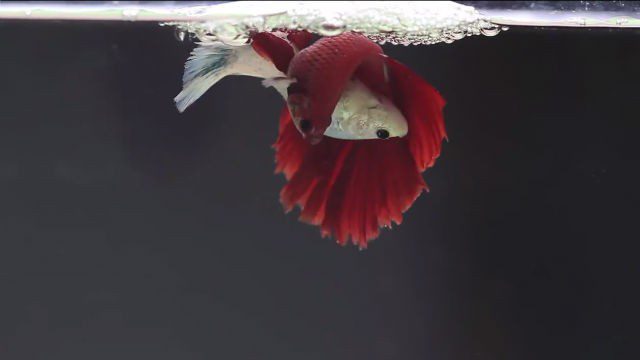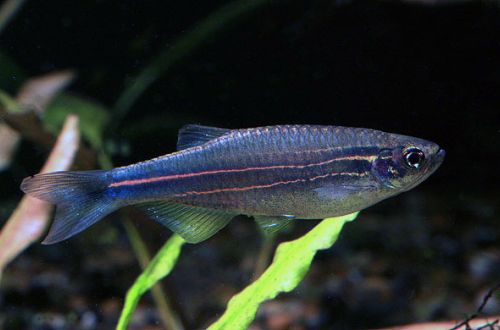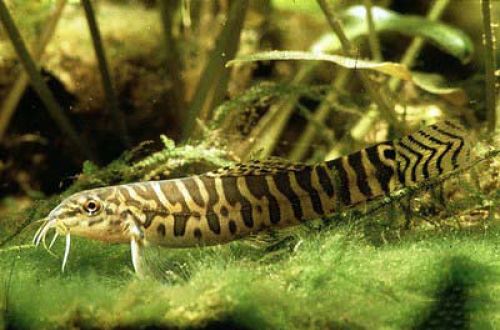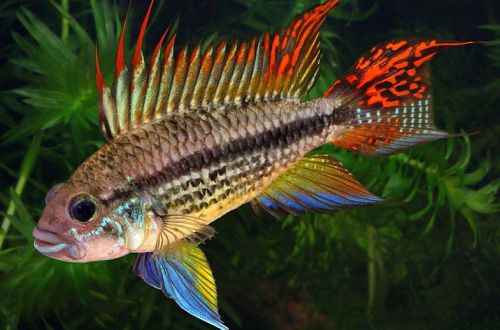
Siamese cockerel
The fighting fish or Siamese cockerel, scientific name Betta splendens, belongs to the Osphronemidae family. Very beautiful original fish with unusual behavior. This species is one of the oldest known freshwater fish kept in aquariums, only the Goldfish has a longer history.
Groups / classification of fighting fish (Petushkov)

Meanwhile, the wild population of fish look nondescript, dull greens and browns prevail. Breeding forms look completely different, which are sometimes called the “Pearl of the East” for their magnificent appearance.
Contents
Habitat
The Siamese cockerel is found in Southeast Asia on the territory of the modern countries of Thailand, Cambodia and Vietnam. However, the most famous are their breeding forms, which are bred everywhere in many countries of the world, both by professional breeders and individual aquarists.
This species prefers slow moving areas of water with dense vegetation, inhabiting the floodplains of large and medium rivers, canals and flooded rice fields. Their natural diet consists of small crustaceans, insects, as well as plants and algae.
How to determine the age of Cockerels (Betta Fighting Fish)
Description
The fish has a strong body of an elongated shape with short rounded ribs. Artificially bred species are distinguished by a variety of colors, patterns, sizes and shapes of fins that are difficult to classify.
Like other labyrinth species, the fighting fish has a special organ located in the oral cavity, with the help of which it can absorb oxygen directly from the atmospheric air. This feature helps fish to survive in waters with low oxygen content.
Food
The diet should contain a significant amount of protein products – live or freeze-dried food, with the addition of herbal supplements. In a home aquarium, bloodworms, insect larvae, daphnia, brine shrimp and other similar products can be fed. The plants themselves and the algae in the aquarium, which grow especially well on wooden objects, can be a source of plant food. There are foods designed specifically for fighting fish, containing all the necessary trace elements and vitamins. Feed once or twice a day.
Maintenance and care
This species is an excellent choice for beginner aquarists and for those who do not want to set up large aquariums at home. One fish can successfully live in a small tank no more than 10 liters or even less. The “labyrinth organ” will allow you to adapt to periodic changes in the concentration of oxygen in the water, which is often observed in small aquariums. Any aquarium should be covered with a lid to avoid accidental jumping of fish. The minimum set of equipment consists of a filter, aerator, heater and lighting system. In small tanks, it is recommended to use filters that combine the functions of an aerator.
The design should use strong plants with a strong root system, located in groups to leave free space for swimming. The presence of shelters (driftwood, grottoes, etc.) is a must if more than one fish lives in an aquarium. The substrate is any dark, the size of the soil particles does not matter only for the rooting of plants.
Social behavior
The name “Fighting Fish” comes from the special behavior between males. They arrange fierce battles, but they are not without nobility. During a duel, when one of the opponents needs to rise to the surface in order to swallow air, the opponent does not attack him, but suspends the fight. If there is another male nearby, he will patiently wait for the end of the fight to fight the winner without joining either of the opposing sides. Females are less aggressive, but also have an internal hierarchy, so shelters are needed for weaker individuals.
The joint maintenance of two or more males in one aquarium is not allowed, the male can live either alone or in the company of females.
Such behavior significantly reduces the options for the introduction of other fish species. Since the male will attack anyone who even slightly resembles his rival, therefore, the neighbors should look opposite both in color and in the size and shape of the fins. Brightly colored fish can be attacked by mistake. The optimal combination is achieved, for example, with Cardinal tetras, Neons and other tetras, as well as with catfish.
Sexual differences
Males have a brighter coloration, however, in some breeding species, females have no less expressive appearance. However, the coloration of females is predominantly paler, the fins are shorter. During spawning, females may show horizontal stripes, indicating that they are ready to spawn.
Breeding / breeding
Creating favorable conditions for spawning is quite simple, but breeding at home is complicated by the fact that fry of artificial morphological species are extremely susceptible to infections, which makes breeding impractical. In addition, due to the similarity of females to males, during spawning they may be subjected to aggression from a partner who may mistakenly take them for a rival, with all the ensuing consequences.

Fish diseases
The closer the fish to its natural wild form, the more hardy and unpretentious it is. Exotic varieties have weaker immunity and, when conditions worsen, they inevitably fall ill / become infected primarily with bacterial infections. Long fins are prone to fin rot and other diseases. Read more about symptoms and treatments in the Aquarium Fish Diseases section.
Common diseases of fighting fish (Petushkov)





